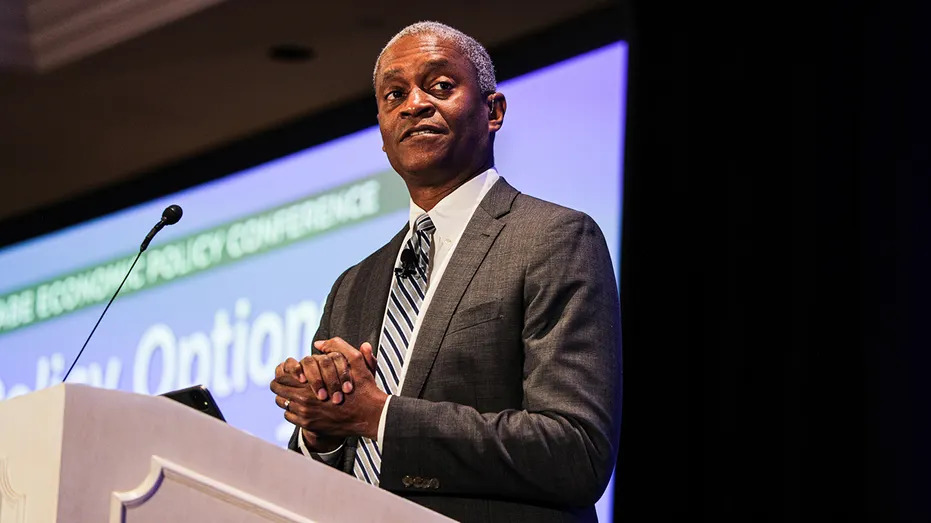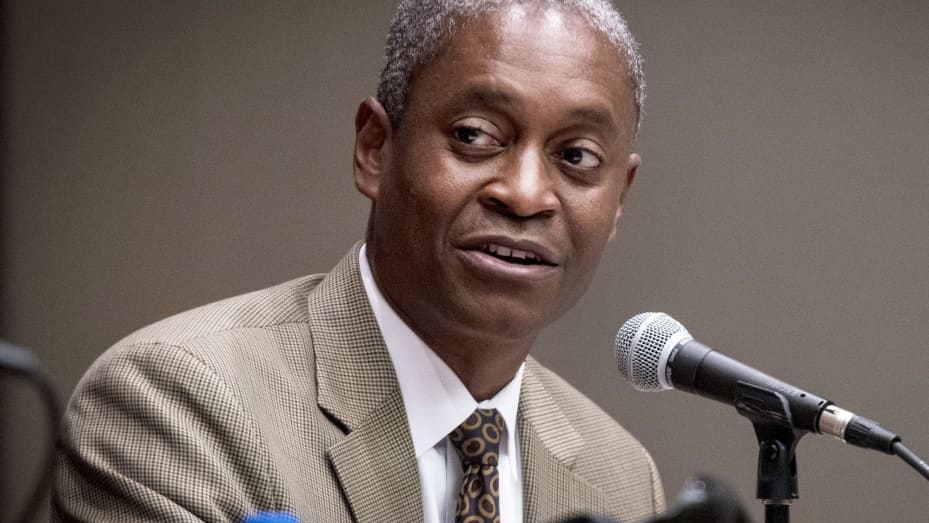Fed’s Bostic Eases Rate Cut Plans: Atlanta Federal Reserve Bank President Raphael Bostic’s surprising move to ease rate cut plans amidst rising inflation fears has sent shockwaves through financial circles. His departure from expected rate cuts reflects a strategic pivot in response to mounting inflation concerns and strong economic signals, stirring intense debates and speculation. Bostic’s cautious stance hints at deeper uncertainties surrounding future monetary policy decisions and inflation expectations, raising intriguing questions about the evolving economic landscape. Find out more about the implications of Bostic’s revised interest rate outlook and the implications for economic resilience under the shadow of inflationary pressures.
Revised Interest Rate Outlook
In response to mounting inflation concerns and robust economic indicators, Atlanta Federal Reserve Bank President Raphael Bostic has made a decisive shift in his interest rate projections for the year. Bostic’s revised outlook signifies a departure from previously anticipated rate cuts, indicating a more cautious approach amidst the current economic landscape rife with inflationary pressures and unexpected strength. This move by Bostic heralds a strategic maneuver aimed at steering the turbulent waters of fiscal policy, where inflation fears loom large, threatening to derail economic stability.
The sudden pivot in Bostic’s interest rate stance underscores the gravity of the inflation dilemma gripping markets and policymakers alike. It reflects a nuanced response to the confluence of factors shaping the economic trajectory, where data points to resilience but inflation casts a foreboding shadow. Bostic’s recalibration of rate projections serves as a clarion call for prudence and vigilance in the face of unprecedented economic challenges, demanding a deft hand at the monetary policy helm to navigate through uncertain waters.
Concerns Over Inflation and Economic Resilience
Amidst the mounting concerns surrounding inflation and the resilience of the economy, a critical reassessment of prevailing economic trends is crucial to navigate the turbulent financial landscape. The recent shift in Federal Reserve Bank of Atlanta President Raphael Bostic‘s stance, expressing less confidence in inflationary trends and veering away from the Fed’s 2% target, has sparked a wave of apprehension among investors and policymakers alike. Bostic’s surprising adjustment in his 2024 U.S. economic growth estimate to 2%, coupled with the stagnation of the unemployment rate at 3.9%, a level historically associated with inflationary pressures, paints a perplexing picture of the economic landscape.
This unexpected turn of events has left many pondering the future trajectory of interest rates and monetary policy decisions. As markets brace for potential turbulence amidst the looming threat of inflation, a cautious approach is warranted to secure economic stability and growth in the face of uncertainty.
| Concerns | Implications | Action Needed |
|---|---|---|
| Inflationary pressures rising | Monetary policy adjustments | Vigilant monitoring |
| Economic growth estimate revision | Market volatility | Strategic planning |
| Unemployment rate stagnation | Potential wage pressures | Contingency measures |
Shift in Policy Approach and Monetary Policy Implications
With a critical shift in policy approach, the domain of monetary policy is undergoing a profound reevaluation, stirring waves of speculation and anticipation among financial circles. The recent remarks by Bostic, a key figure in the U.S. central bank’s interest rate policy, have sent shockwaves through the market, signaling a departure from the anticipated rate cuts. This strategic pivot has sparked intense debates and raised intriguing questions about the future trajectory of monetary policy.
In this atmosphere of uncertainty, investors and analysts alike are left pondering the following:
- What implications does this revised outlook have for inflation expectations?
- How will this shift impact market dynamics and investor sentiment in the short term?
- Is the Fed’s decision indicative of a broader reassessment of economic conditions?
- What adjustments might be necessary to navigate the evolving landscape of monetary policy effectively?
ALSO READ: Intel’s Massive $100B Spending Blitz: US States Rejoice
News in Brief
The Federal Reserve’s decision to ease rate cut plans despite inflation fears is reckless and shortsighted.
By prioritizing short-term economic stability over long-term resilience, Chairman Bostic is playing a dangerous game with the nation’s financial future.
This shift in policy approach could have far-reaching implications for monetary policy and ultimately harm the economy in the long run.
It’s time for the Fed to wake up and prioritize sustainable growth over short-term gains.
Our Reader’s Queries
Q. How does raising interest rates reduce inflation?
A. When the central bank raises interest rates, borrowing becomes costlier. Consequently, both consumers and businesses may hesitate to take out loans for significant purchases or investments. This cautious approach tends to decrease spending, leading to a reduction in overall demand and, ideally, a decrease in inflation.
Q. Why is the Fed cutting rates?
A. Over time, reductions in interest rates would result in decreased expenses for home and auto loans, credit card borrowing, and business loans. Additionally, these rate cuts could potentially bolster President Joe Biden’s re-election campaign, given the widespread public discontent over rising prices. An economic boost stemming from lower borrowing rates might provide favorable momentum for his bid for re-election.
Q. Why is the Fed cutting rates in 2024?
A. Goldman Sachs announced on Monday that it anticipates three rate cuts in 2024, a reduction from its previous forecast of four cuts for the year. The adjustment is attributed primarily to inflation being slightly higher than initially projected, according to Goldman Sachs economists in a research note.
Q. How does the Fed control inflation?
A. The Federal Reserve aims to manage inflation by impacting interest rates. In times of excessive inflation, the Federal Reserve usually increases interest rates to moderate economic growth and reduce inflationary pressures.



